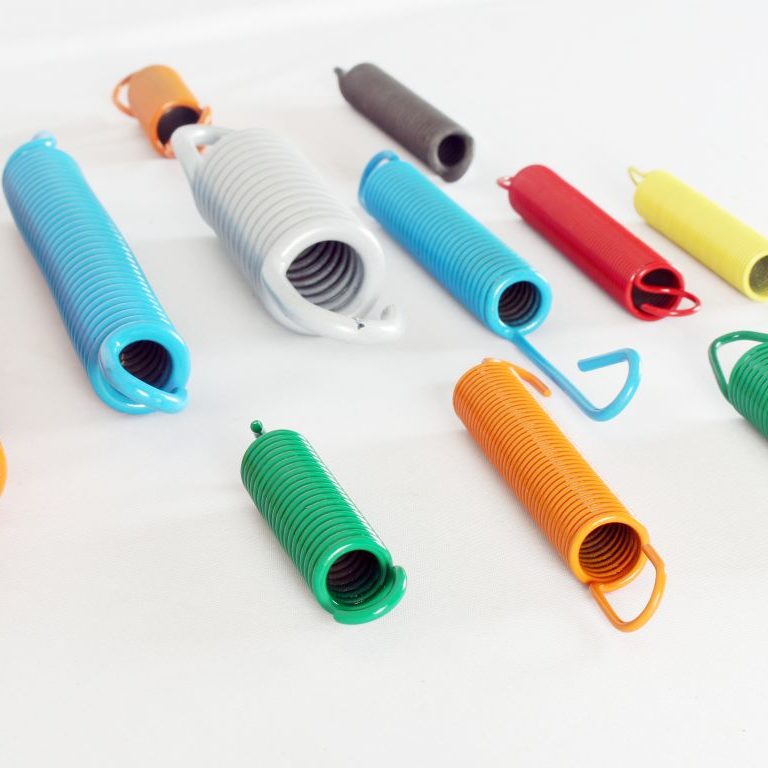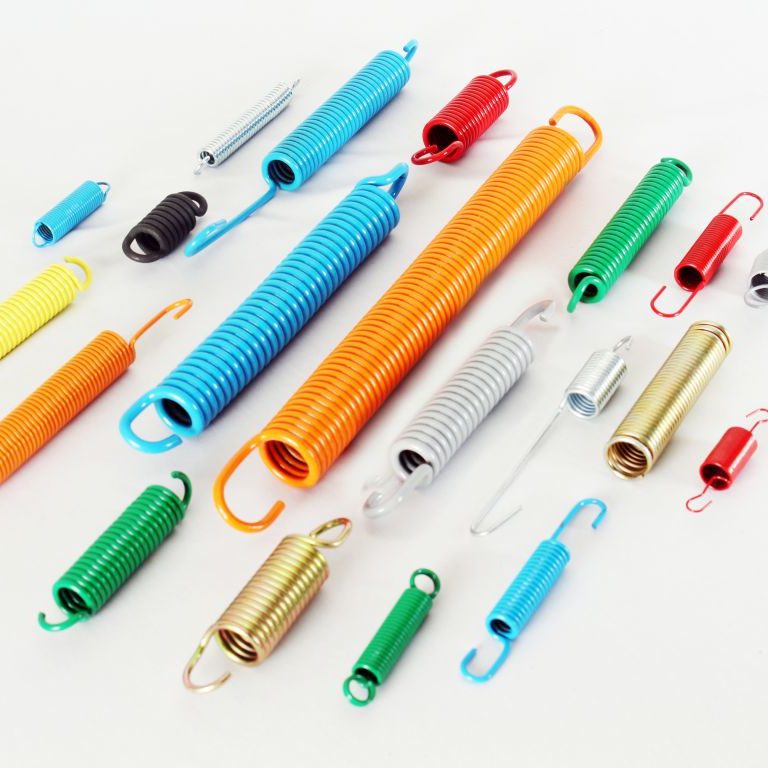Extension Springs
Extension springs, also known as tension springs, are essential mechanical components that store energy when stretched or extended. They work by resisting axial forces and returning to their original length when the load is removed.
We make compression springs from Wire diameter 0.1 mm to 12.5 mm.
Design Considerations:
When designing or selecting extension springs, consider the following factors:
1. Spring Shape and End Type:
• The most common shape is cylindrical with hooks on both ends.
• Other shapes include swivel hooks and straight cut drawbars.
• Remember that stress is highest at the ends of hooked springs, where they are first bent to form the hooks.
2. Number of Coils:
• The number of coils affects the spring’s behaviour.
• Adding springs in series increases travel, while adding them in parallel increases force.
3. Preload and Allowable Stress:
• Preload ensures the spring operates within its intended range.
• Avoid loading past the yield strength to maintain spring behaviour and longevity.
4. Spring Index:
• The ratio of mean diameter to wire diameter.
• Influences spring performance and stress distribution.
Applications Across Industries:
Extension springs find use in various applications:
• Automotive: Hood latches, trunk lids, and seat mechanisms.
• Industrial Machinery: Conveyor systems, garage doors, and agricultural equipment.
• Consumer Goods: Trampolines, garage door openers, and toys.
Calculating Spring Parameters:
• Body-Wire Stress: Consider applied load, number of coils, and spring geometry.
Safety and Failure Considerations:
• Extension springs fail differently from compression springs.
• When an extension spring fails, components can separate, potentially causing accidents.
• Always operate extension springs within their intended range to ensure safety.



